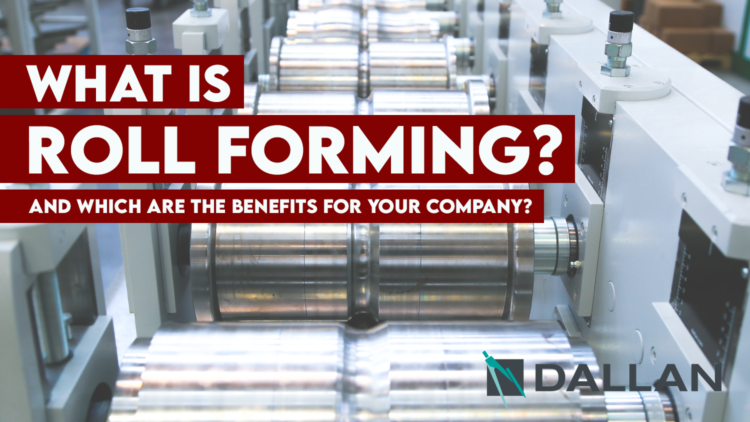What is roll forming? And which are the benefits for your company?

Roll forming is a high productive technology for the production of metal profiles with continuous section.
When it comes to producing metal profiles, one technology that can be used for the bending operation is the press brake, for example.
However, this machine executes one bend at a time, and therefore it has limited productivity.
In the roll forming process, the bends are created on the metal with a number of rolls, assembled on motorized shafts.
These rolls impress in the sheet metal the desired shape, smoothly and in a series of steps (passages).
The number of passages usually goes from 4 to over 60 steps for the most complex profiles.
In roll forming the production speed depends on the speed of the rotation of the rollers and can go anywhere from 10 to over 300 meters per minute!
This extraordinary productivity is unreachable by any other bending process.
The roll forming process can be used on hot or warm steel, or on cold materials – which is the most common and we will focus on this specific case.
The process
A good roll forming process starts from the good design of the profile and of the rollers.
In order to create a good roller design, the designer has to define the steps required to achieve the desired cross section.
In each of the steps, the metal strip progressively reaches the shape of the final section: when we superimpose all the steps, we obtain what is called the “Flower pattern” – in fact, in most cases the drawing reminds that of a beautiful flower!
The flower pattern is then used to design the single rollers for all the roll forming stages, including motorized and peripheral rollers that can be required for complex shapes or materials.
The rollers are then assembled on the roll forming machine, and powered by one or multiple motors, depending on the machine type.
The metal strip is introduced in the first stages and progressively bent through the machine: at the end the profile is cut by means of a cutting tool, or a saw.
The technology depends on the cross section we want to create, and on the function of the final profile.
The roll forming process is suitable to process the most different materials, ferrous and non ferrous metals: steel, aluminum, stainless steel, galvanized steel, pre-painted and coated steel and aluminum, copper, lead, titanium and so on.
The only limit is the formability of the sheet metal, and the springback of each type of material and the minimum bend radius has to be taken into account.
There is more: the process of the roll forming can be integrated with different technologies such as punching, laser cutting, bending.
The punching operation, in particular, can be positioned before or after the roll forming.
Each solution has specific advantages, and it depends on the shape of the section and on the desired result.
When the roll forming machine is joined to other machines it is called a Roll Forming Line, where the material goes straight from the coil to the finished product, and in many cases it can be packed and be delivered to the final storage directly!
Advantages of Roll forming
Roll forming offers great advantages: in particular, its extremely high productivity makes it the best choice for the production of a number of high volume profiles: drywall profiles, metal ceilings, rolling shutters, tubes and pipes, cable trays, racking systems, metal furniture, venetian blinds, solar profiles, guard rails and much much more!
The rolling process ensures high repeatability with an extensive range of materials, from the standard DX51 to the high strength steels like the S390 and more!
The tolerances that can be reached, thanks to the adjustments that can be performed easily on the profiles, make roll forming the ideal solution for all high volume productions.
Today, the introduction of modern technologies such as the coil punching, stamping and the laser cutting, the roll forming has added huge flexibility to the process and today it is used extensively for the production of filter frames, fire dampers, modular constructions and LSF (Light Steel Framing).
If you would like to check if roll forming is the right technology for your volumes of production and profiles, do not hesitate: go straight to our CONTACT FORM and send us your enquiry.
Our technical team is looking forward to helping you!
